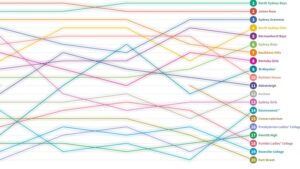
Stronger coordination between the brain and the stomach’s natural rhythm is linked to higher levels of anxiety, depression, and stress, according to the largest study of its kind from Aarhus University. This groundbreaking research shifts the focus from the commonly studied gut bacteria in the lower intestine to the stomach, the body’s upper digestive hub with its own network of nerves.
Involving over 240 participants, the study found that when brain activity is more tightly synchronized with the stomach’s slow electrical waves, individuals were more likely to report mental distress.
“The stomach’s connection to the brain may actually be too strong in people under psychological strain,”
says postdoc Leah Banellis from the Department of Clinical Medicine, lead author of the study.
A Surprising Pattern in Gut-Brain Communication
The stomach possesses its own nervous system, often referred to as the ‘second brain’. Its slow waves occur roughly every 20 seconds, even in the absence of food intake, creating a constant background rhythm akin to the heartbeat. By combining functional MRI scans with electrogastrography, the researchers measured the degree to which brain activity matched these waves in each participant.
“Intuitively, we assume stronger body–brain communication is a sign of health. But here, unusually strong stomach–brain coupling seems linked to greater psychological burden – perhaps a system under strain,”
says Professor Micah Allen, senior author of the study.
A New Frontier in Mental Health Research
The enteric nervous system is one of the most complex and independent components of the peripheral nervous system. Despite its direct lines of communication with the brain via the vagus nerve, little research has focused on the stomach’s role in mental health.
“This part of the gut has been largely ignored. Most research focuses on the microbiome and lower digestive system. Our results suggest stomach rhythms are also deeply tied to emotional well-being,”
says Leah Banellis.
While the findings are correlational and do not establish causation, the researchers believe this pattern could point to a new physiological marker of mental health that is objective, measurable, and grounded in the body’s natural rhythms.
Implications for Treatment and Future Research
If stomach–brain synchronization is confirmed as a stable feature of mental health, it could pave the way for new diagnostic or therapeutic possibilities.
“We know certain medications and even the foods we eat can influence gastric rhythms. One day, this research might help us tailor treatments based on how a patient’s body and brain interact – not just what they report feeling,”
says Micah Allen.
The team plans to conduct follow-up studies with clinical populations to test whether stomach–brain coupling can predict treatment response or signal an impending mental health crisis.
“We are just beginning to understand how the body’s internal rhythms shape our mental lives. This is one small step toward bridging that gap,”
says Leah Banellis.
About the Study
Study type: Cross-sectional human neuroimaging study using fMRI and electrogastrography
External funding: The Lundbeck Foundation
Conflicts of interest: None declared
Link to scientific publication: Nature
This research represents a significant shift in understanding the complex interactions between the gut and the brain, opening new avenues for addressing mental health issues through physiological markers and treatments.







